Tooth discolorations most commonly are caused by factors such as genetics, aging, diet, and nicotine use and present as fairly uniform yellow or brown stains that cover the entire surface of all natural teeth. Generally teeth with this etiology and color range will lighten satisfactorily after 3 days to 6 weeks of tray bleaching with 10% carbamide peroxide. In most cases, the teeth look very natural after bleaching, with the incisal area normally lighter than the gingival portion. Tooth discolorations that fall outside of this typical range (ie, tetracycline stains, partial tooth discolorations, and single dark teeth), as well as situations that involve restorative treatment, will be addressed in more detail in the following chapters.
Genetics
Natural tooth color varies greatly amongst individuals. In some cases, permanent teeth erupt with a yellow discoloration that is quite noticeable in contrast to the whiteness of the primary teeth. This is most significant for children in the mixed dentition stage. The permeability of the tooth and the ability of the dentin to change the color allow these genetically yellow teeth to be whitened effectively with bleaching.
Another situation that is commonly encountered is canines that are a half shade darker than the lateral incisors and the first premolars. Occasionally, the canines will be significantly darker than the adjacent teeth, negatively affecting the overall esthetics of the smile. These yellow canines can be lightened to more closely match the incisors and premolars with tray bleaching. The fact that bleaching can effectively change the color of a genetically discolored tooth is a good indication that, in addition to removing stains, bleaching can alter the intrinsic color of the tooth.
Aging
As teeth age, they typically become more yellow, primarily from the internal deposition of secondary dentin and also as a result of extrinsic staining. Hence yellow teeth are associated with older age, and yellow teeth make a person appear older. It is estimated that a person over 45 years of age will look 10 years younger with whiter teeth. As people live longer, are more healthy, and appear more healthy, there is a greater need for tooth whitening.
Diet
Food and beverages can stain teeth. Typically staining is associated with coffee and tea, as well as red wine or other beverages that are dark in color. These stains are very responsive to bleaching. If the patient continues to consume the stain-causing food or beverage, the discoloration will return, but “touch-up” removal is also very easy. While some patients elect to cease consumption of the offending substance during bleaching, it is not necessary. Even in the case of coffee, continued consumption would slow down the bleaching process only by a day or so out of a 6-week period.
Nicotine
Nicotine stains begin as a tenacious external or extrinsic discoloration. Over time, the nicotine stain absorbs into the tooth and becomes an intrinsic stain, causing the teeth to appear very dark. Nicotine stains are much more difficult to bleach than typical brown stains, generally requiring 1 to 3 months of nightly tray bleaching treatment for removal. However, the results can be exceptional and often motivate patients to cease smoking to maintain their beautiful smile.
As shown in the following cases, not all teeth obtain the same outcome from bleaching. It is often difficult to predict how teeth will respond to bleaching treatment. However, excellent outcomes can be achieved for patients with vastly different discolorations.
CASES 1 TO 3 Stains of genetic origin
CASE 1
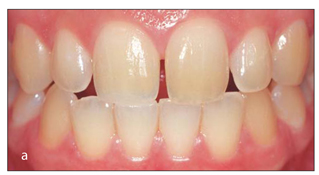
These genetically discolored teeth have an unnatural appearance.
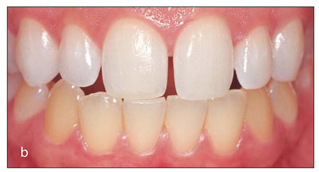
After tray bleaching with 10% carbamide peroxide, the teeth have a more natural color.
CASE 2
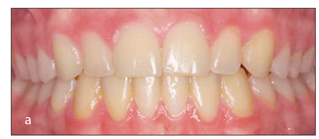
This 16-year-old female patient had markedly yellow teeth at eruption. Although orthodontic treatment improved the alignment of the teeth, the color of the teeth detracts from the overall esthetics.
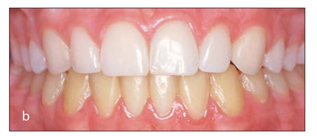
The results of tray bleaching are dramatic, providing a significant improvement in the patient’s self-image.
CASE 3
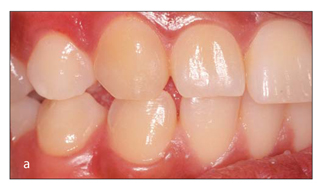
This patient has canines that are significantly darker than the adjacent teeth, a common genetic occurrence.
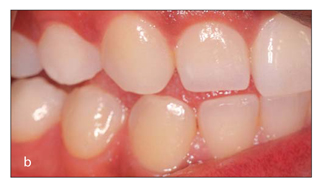
After bleaching all of the teeth, the canines more closely match the adjacent teeth.
CASES 4 TO 6 Aging-related stains
CASE 4
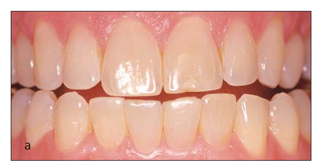
Teeth tend to discolor with age as a result of extrinsic staining as well as deposition of secondary dentin.




